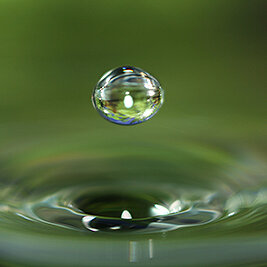
As we are all aware, water in Mendocino County — in fact, the entire state — is in critically short supply due to a lack of snow and rain these past few winters. West Center knows that having water is essential for small businesses to continue to operate. We did some research and found the following article, written by Megan Erwin for PG&E and adapted for length, with some water conservation tips every business should implement immediately.
Reducing water usage, like most other environmentally friendly practices, is something many people are aware they need to do, but they often lack the information or know-how to accomplish their goal. In reality, though, pursuing a water conservation effort is much simpler than many might assume.
By looking to the following six areas, business owners can significantly cut into their water usage, be more effective environmental stewards, save money on their utility bills and reduce the need for water system maintenance.
1. Improve water system assessment and maintenance
-
Develop a water conservation plan: Work with employees and educate them about water conservation. Develop a written plan for how employees can save water, including conservation benchmarks, then regularly check to see if those benchmarks are being met.
-
Regularly assess water-consuming systems: Check for leaks and study utility bills to see if there have been any spikes in water usage and consult with a plumber on a regular basis. By staying on top of any unexpected or potential maintenance issues, businesses can head off major problems before they arise.
2. Implement simple, everyday water conservation techniques
-
Check for leaks: Even the smallest leaks add up over time. Regularly checking for and repairing leaky faucets and pipes can save a business many gallons of water each day.
-
Efficiently operate water-intensive machinery: Businesses that use water-intensive products (e.g., dishwashers and washing machines) should only run them once they are fully loaded.
-
Reset water temperature: Keeping water temperature settings between 110-120 degrees fahrenheit reduces wasted energy.
-
Shut off cooling units: Some air conditioning units consume a lot of water. Shutting them off when they are not needed may save water and energy.
3. Install basic water-efficient technologies
-
Aerated faucets: Aerated faucet heads provide a reduced water flow.
-
Water heater insulation: Install an insulation blanket on water heaters, particularly older models, and insulate the first three feet of the “out” pipe on all water heaters.
-
High-efficiency bathroom fixtures: Waterless urinals and high-efficiency toilets are relatively easy and affordable to install. They also have a large impact on reducing water usage and lowering utility bills.
-
Pre-rinse spray valves: Installing low-flow pre-rinse spray valves can save food service businesses $1,500 a year or more.
4. Install advanced water-efficient technologies
-
Install ENERGY STAR and WaterSense products: When it comes time to replace a water heater or any other water-intensive product, install WaterSense – or ENERGY STAR-certified products. These products are at least 20% more efficient than conventional models, have longer lifespans and are less prone to maintenance issues.
-
Install tankless water heaters: In areas where water is used infrequently, tankless water heaters can reduce standby storage costs and waste.
-
Install timers and controls: These products automate the conservation effort, turning faucets off after specific intervals to reduce waste.
5. Use efficient landscaping techniques and practices
-
Install moisture sensors: Automated landscaping can sometimes result in the watering of green areas even when it isn’t needed. Moisture sensors help to avoid that waste by automatically shutting off sprinklers and other irrigation tools when they aren’t needed.
-
Check sprinkler coverage areas: Many sprinkler systems are installed in places where much of their water is wasted on non-green areas. Check to make sure that sprinklers only cover areas where their water output will be effective.
-
Irrigate in the morning or early evening: This practice will help stem the loss of water to evaporation.
-
Use drought-tolerant plants and native turfs: When designing and building an outdoor landscape, make sure to use plants and turfs that require as little water as possible.5
6. Water recycling and water reuse: the present and future of water-efficient technologies and practices
-
Water recycling: There are many ways to recycle water, from modern gray water systems that take waste water and recycle it for use in boilers and cooling units to recovery systems that capture and reuse boiler and steam condensate.
-
Water reuse: Water reuse is a simple practice that business owners and their employees can implement. Water reuse practices include using leftover drinking water to irrigate indoor plants and using waste water to irrigate outdoor green areas.

